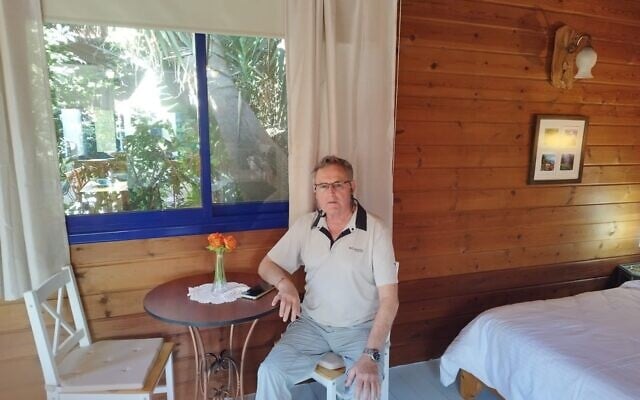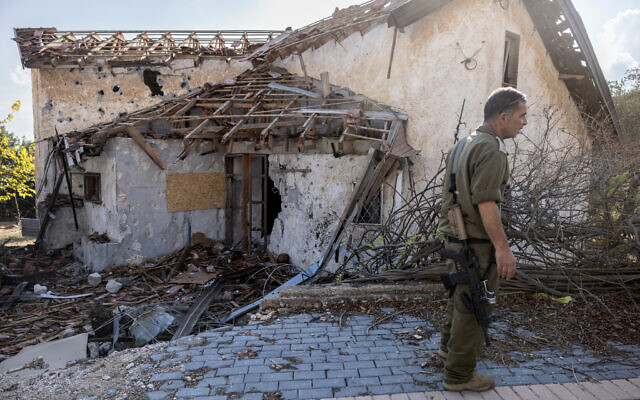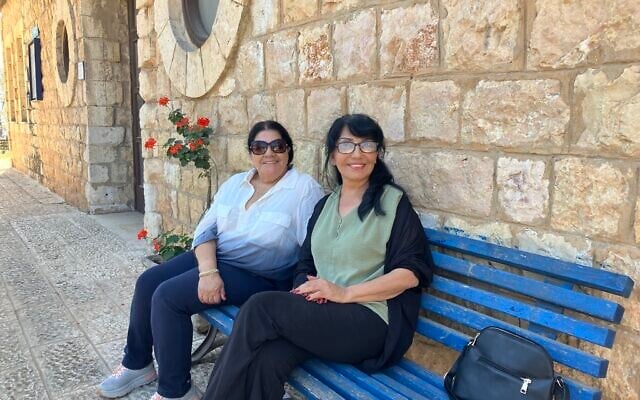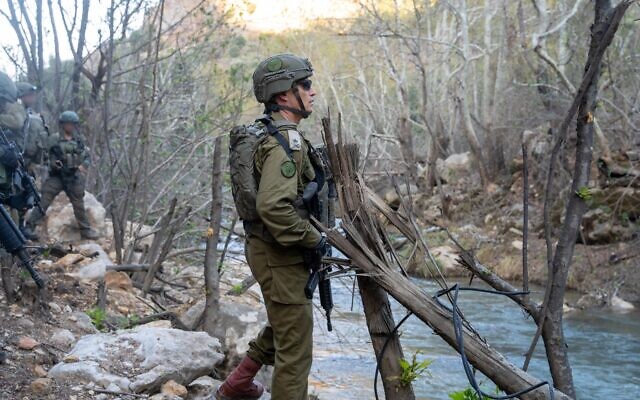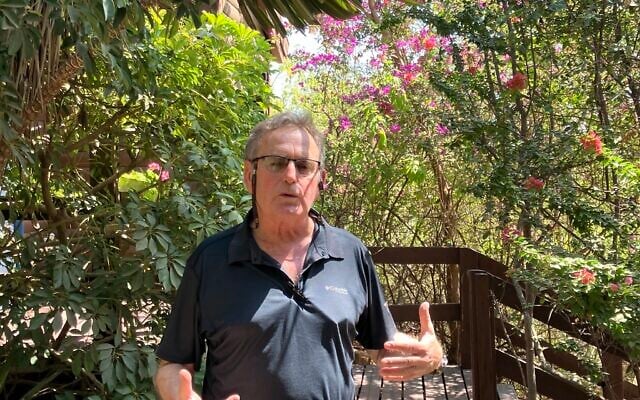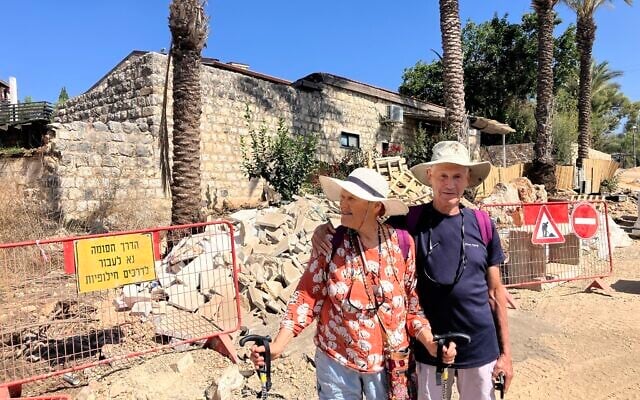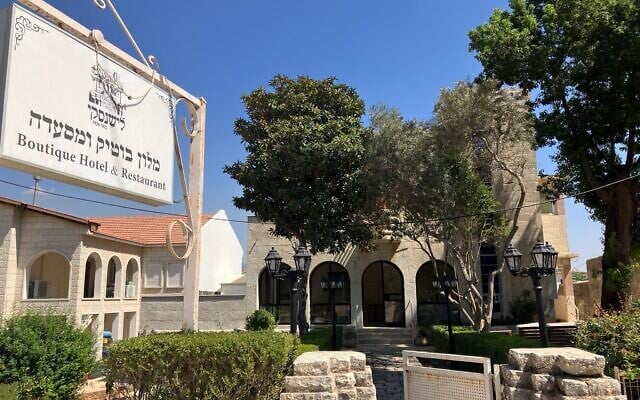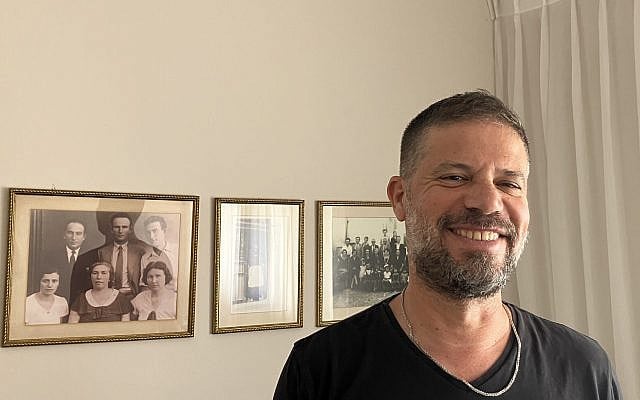

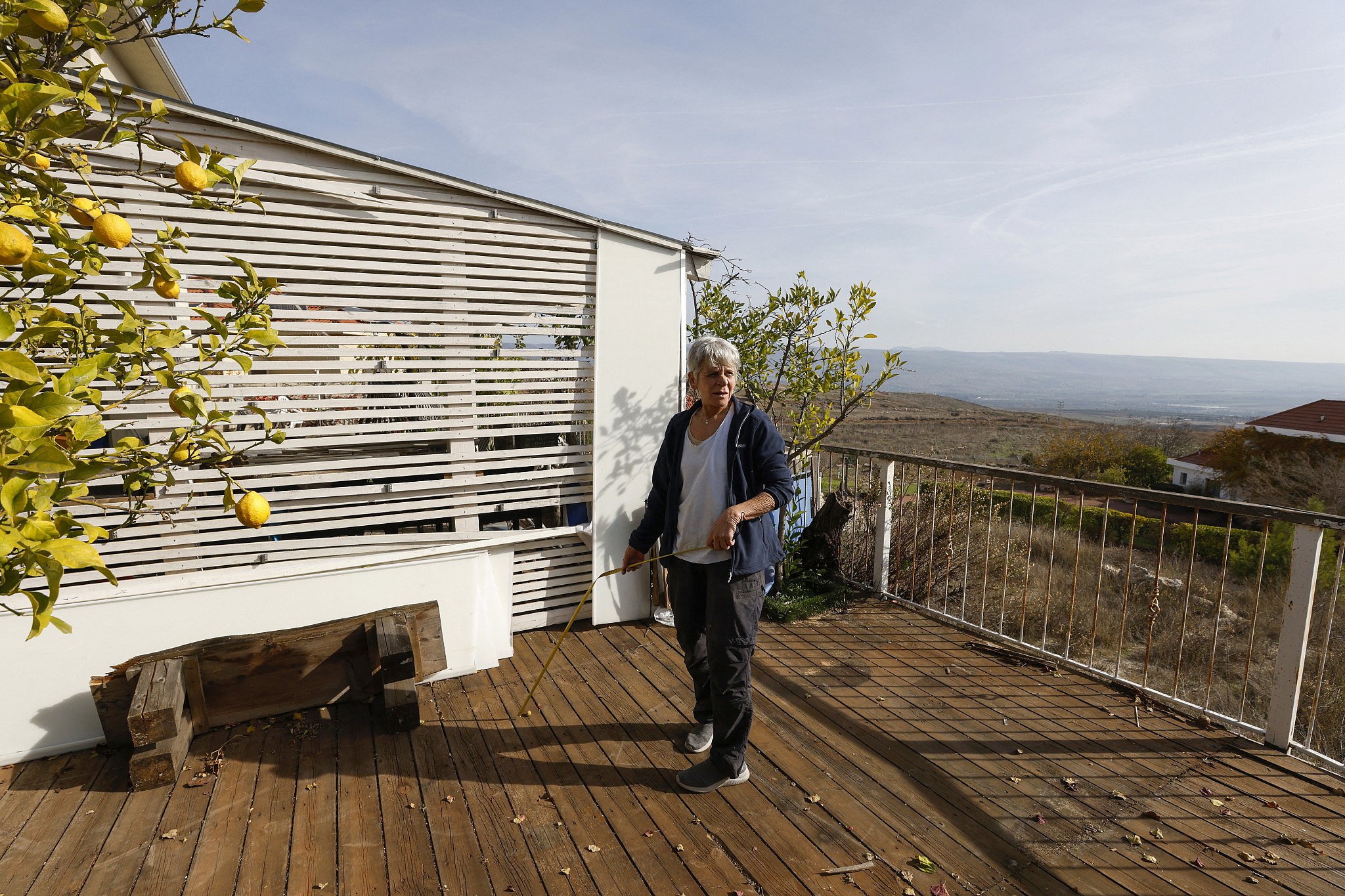
METULA — Asher Greenberg opened the door to one of his three rustic cottages in this northern town, nestled among colorful bougainvillea and leafy trees. Inside the charming vacation rental, there was a wooden table set for two and a crisply-made bed.
But once again, on a recent Thursday afternoon, the guests who were supposed to come had canceled their reservations.
“People want to come on a vacation to enjoy themselves and not be in a construction site,” Greenberg said.
With its red-tiled roofs, old stone buildings, orchards, and a cobblestoned main street lined with hotels and restaurants, Israel’s northernmost town has long drawn comparison to somewhere in Tuscany, drawing thousands of visitors each year.
But that changed suddenly on October 8, 2023, when Hezbollah began firing barrages of rockets, missiles and drones into Israel in solidarity with fellow terror group Hamas on a near-daily basis, the battering lasting until a ceasefire was reached in the north in late November 2024.
Some 60 percent of Metula’s homes and municipal buildings were badly damaged, if not completely destroyed, during the almost 14 months of violence, and almost all of its 2,000 residents were made to flee, along with some 60,000 others from other border communities. Only Kibbutz Manara, also on the edge of the northern border, 24 kilometers (15 miles) away from Metula, saw more destruction, with 75% of its buildings destroyed.
The Northern Rehabilitation Directorate has set aside NIS 3.4 billion ($934 million) in compensation to help northern communities recover.
On September 17, the administration managing the rebuilding of the north announced that some 87% of northerners had returned or were replaced by newcomers, with some communities even reporting growth over pre-war population figures, bolstered by a surprisingly robust calm on the Lebanese front.
In Metula, however, the population stands at only 40% of its pre-war tally, according to a municipality spokesperson, the lowest figure of any northern town evacuated in the days following the Hamas-led October 7, 2023, onslaught in southern Israel, which sparked the fighting in the north.
One kindergarten has reopened. The elementary school, destroyed by Hezbollah rockets, is still closed. Only 34% of the town’s students have returned, a figure much lower than other schools in the north, according to Education Ministry reports.
There was so much destruction to its infrastructure that much of the city is still in the throes of an intense reconstruction campaign. After two years of war, restarting Metula’s once-flourishing tourism industry, which, along with its farms and orchards, is the city’s economic mainstay, remains a potent challenge.
If the Galilee panhandle is shaped like a finger reaching from Israel toward Lebanon, then Metula is its fingernail, stretching farther north than any other city in the country. Set on a ridge of picturesque hills wedged between Israel’s fertile Hula Valley and Lebanon’s Ayoun Valley, the quaintness of the town exists in defiant opposition to the difficulties posed by being so close to an often restive frontier.
Metula is now undergoing rehabilitation — but is well short of experiencing a renaissance. On the city’s formerly inviting main street, there were once five hotels, several restaurants and the town’s primary synagogue. Only one hotel and one restaurant have reopened. Everything else is on the mend, including the Canada Center sports complex, home to an Olympic-sized pool and one of the country’s only skating rinks, that also drew in visitors.
The cheerful sound of birdsong, a central feature of Metula’s verdant setting before the war, now mixes with the noise of construction workers who commute from nearby towns, arriving each day to help repair roads, buildings and infrastructure.
Sitting on a bench in front of the library, two longtime residents, Nicole Gino and Dr. Dana Daniel Horowitz, explained the challenges of welcoming tourists back to a town where so many buildings are pocked with shrapnel and have broken windows or bombed-out roofs.
Horowitz’s house was partially damaged during the war and is currently uninhabitable. Gino’s house suffered a direct hit.
“At age 70, I have to start again from zero,” Gino said. “The only thing I even tried to save from the house — where I raised six children — were some photo albums.”
The women said that coming back to Metula is difficult when their homes are not in livable condition. They are now living in apartments in the town.
“We’re happy to be back, but it isn’t simple,” said Horowitz. “There’s no post office. The doctor comes only once a week or every two weeks.”
She said she feels safe, but she still gets panic attacks when she hears sudden booms. More importantly, she said she feels guilty for the soldiers who were killed defending Metula and the northern border region.
“They sacrificed their lives for us,” Horowitz said sadly.
Outgoing IDF Northern Command chief Maj. Gen. Ori Gordin spoke to reporters at an army post just north of Metula on July 29, saying that since the beginning of the ceasefire, the IDF carried out over 500 airstrikes against Hezbollah targets in Lebanon, killing at least 230 operatives and destroying over 90 rocket launchers and thousands of rockets.
“The army is constantly on forward defense,” Gordin said. “Hezbollah is far from us, and we strike it at every opportunity.”
In his holiday cabin, Greenberg said that the fear of Hezbollah or Iran is “gone.”
In the past, Hezbollah supporters used to come up close to the border and shine lasers at drivers to blind them in their cars, Greenberg said. Now, he said, an army outpost prevents such actors from entering the border area.
Today, according to IDF assessments, most of Hezbollah’s weapons and operatives are located in areas north of the Litani River, following Israel’s destruction of the terror group’s infrastructure in the villages along the border.
Greenberg said he feels the difference in his sense of security.
“There are no terrorists in the region,” he said.
Owners of hotels in other evacuated places in the north, such as HaMakom in Netu’a and Hagoshrim Hotel in Kibbutz Hagoshrim, said that occupancy has returned to pre-war figures.
But the reason that visitors aren’t coming to the cabins is not out of fear, Greenberg said. It’s simply because there’s no place for them to eat breakfast or dinner in the town. Ayuni, the one restaurant that has reopened, is closed for Shabbat, so weekenders have nowhere to go.
The town was founded in 1896 by Baron Edmond de Rothschild. Its population stayed at less than 1,000 residents for years until Tel-Hai College was founded near Kiryat Shmona, about 10 minutes away.
When Tel-Hai reopens after the Jewish holidays, students may be more drawn to Metula, but for now, their absence is felt.
“The town is repairing fast, but it is empty,” said Dalia Meiri, who was hiking with her husband, Yigal, up through the Ayun Stream Nature Reserve until they reached Metula, where they stopped to survey the damage.
That emptiness didn’t deter Israel Lishansky, whose grandmother opened the Lishansky Hotel in 1936. He has deep roots in the town and reopened the historic hotel in August, the only hotel on Metula’s main street currently accepting guests.
Lishansky was hard at work when he stopped to speak with The Times of Israel in the lobby of the Bauhaus-designed hotel.
“It was very hard to restart,” he said.
Unlike the Alaska Inn diagonally across the cobblestone street, which sustained serious damage and is in the middle of a complete overhaul, the Lishansky Hotel suffered less destruction.
Still, Lishansky has been working hard since March to get it ready for tourists to return.
“It’s complicated to move back here, but we decided to give it a chance,” Lishansky said. “I’m optimistic.”


